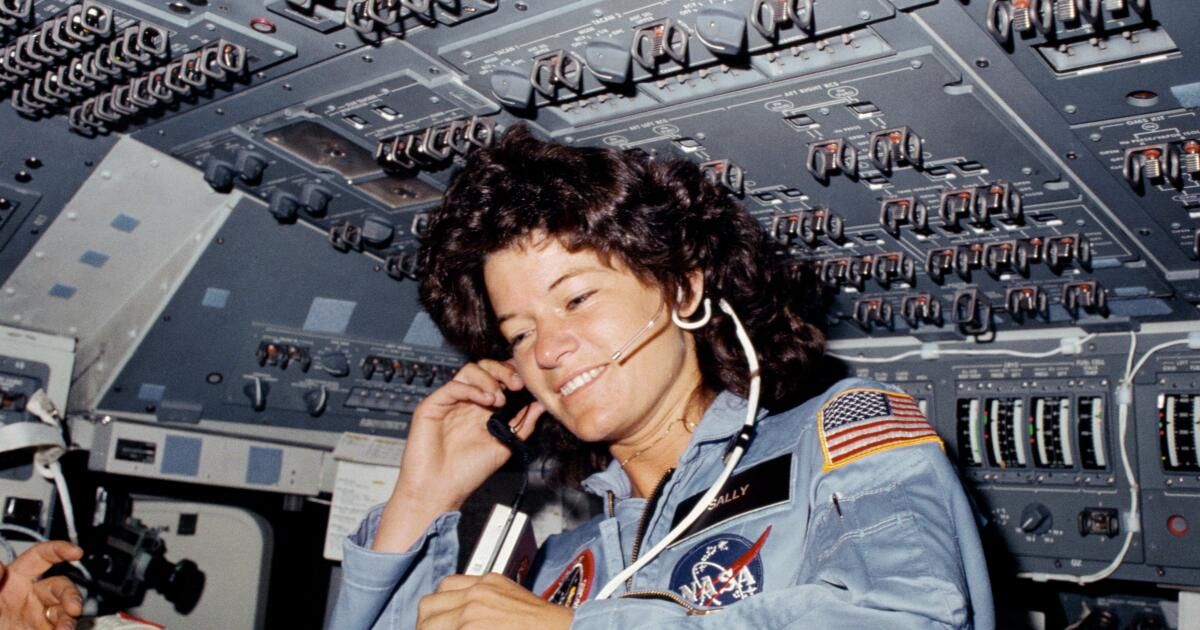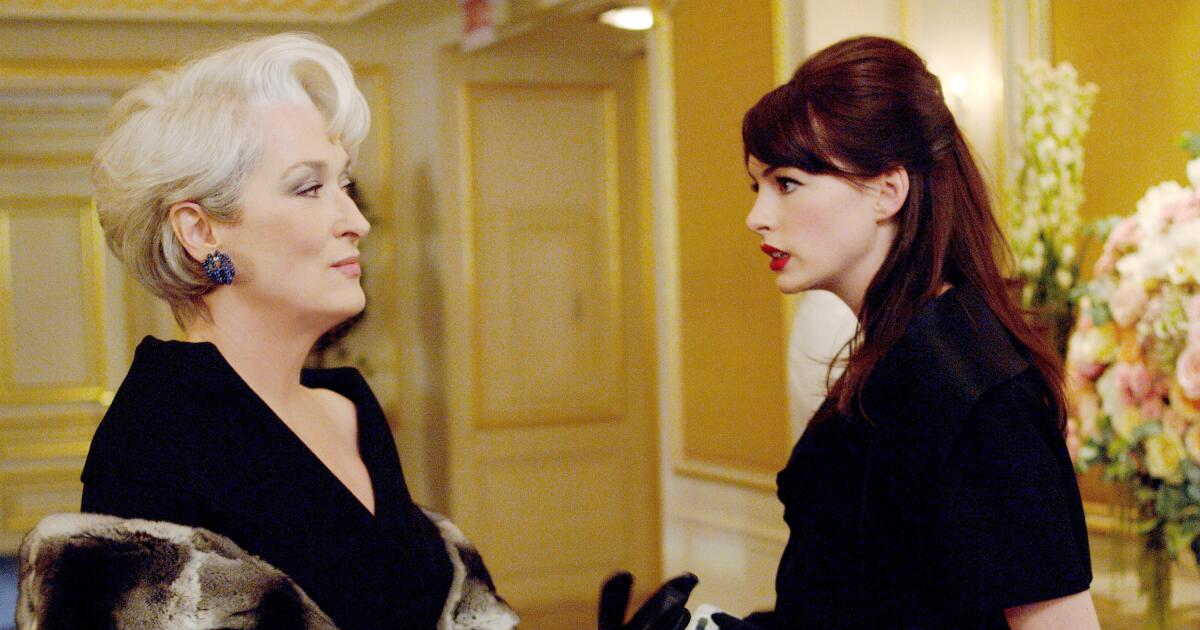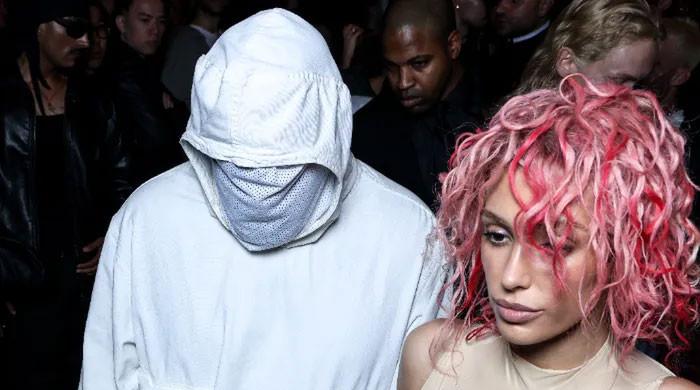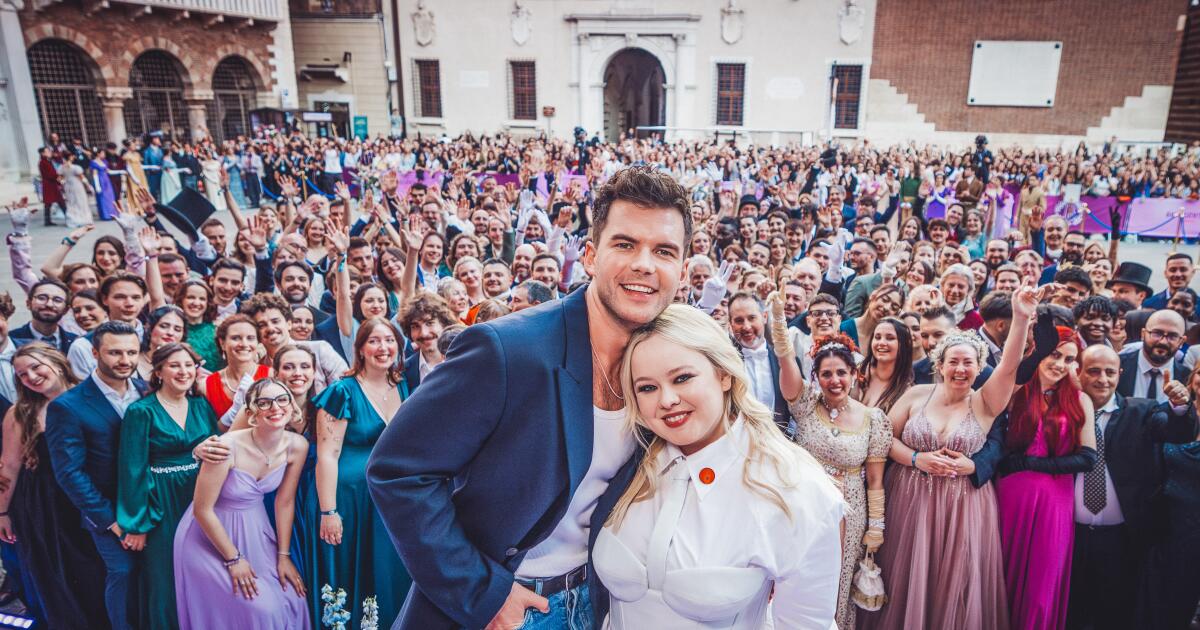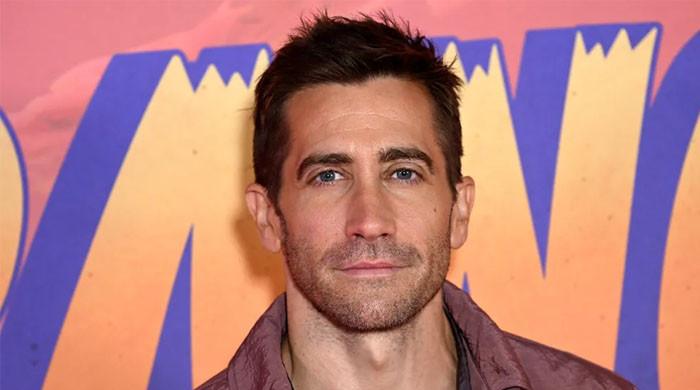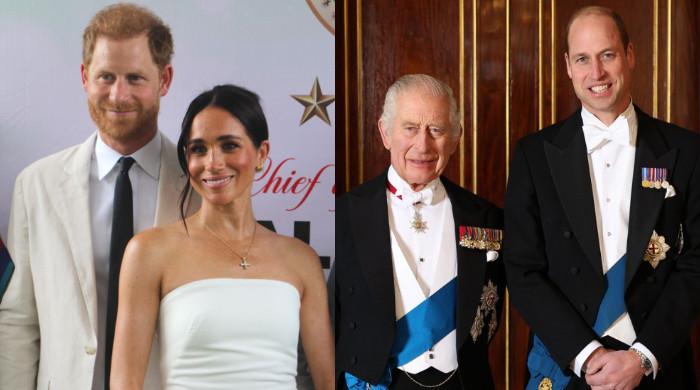The name Sally Ride carries with him the silent whispers of greatness. As the first American woman to go to space in 1983, Ride became an icon. The young women who saw the famous astronaut on the cover of Newsweek, the people and even MR magazine.
That was the case of filmmaker Cristina Costantini. His documentary “Sally”, which premiered in Sunday, is an ode for his childhood hero. It will be broadcast on Monday at 9 pm in National Geographic before transmitting in Hulu and Disney+.
“I have been a Sally fan since I was a small child,” says the filmmaker in a teleconference call along with Ride's long -standing partner, Tam O'Shaughnessy. “I painted a mural of her that still exists on the wall of my primary school. I made a book report on her. The equation was simple: seeing a woman doing great and brave things that women were not supposed to do made me think that perhaps I could also do great things.”
The director Cristina Costantini on the set of recreation of the study of the release STS-7.
(Parker Hill / National Geographic)
But “Sally” is not just a portrait of how a young fan of oak dodgers with wild ambitions went to NASA and became, as Costantini expresses in a joke, “the first girl in the valley in space.” On the other hand, the documentary threads of that story known with a private about how Ride maintained its relationship of almost three decades with O'Shaughnessy a secret until his death by cancer in 2012, when the Ride's obituary made him public.
Now, “Sally” puts his love story in front and the center. Dramatizations, love letters, photographs and domestic videos paint a portrait of a happy couple who squirrel a life away from the public eye. Ride's sexuality is not simply as a note to the foot of its history, and the documentary asks viewers to understand why the astronaut chose to cordon off a part of his life and live within a closet of his own creation.
“I was worried that the movie was too difficult for Sally,” admits O'Shaughnessy.
“Why couldn't he go out and” Oh, poor tam “and all that, you know?” She asks rhetorically. “But this is not how it occurs. The fact of the matter is when Sally and I met in the mid -80s, it was a bit dangerous to be open. You could lose many opportunities with your career, with projects in which you wanted to participate.”
And as then, she feels good again today to be out, she says. “But I think it is really good for the young viewers of the film to see that there were good reasons for Sally and I were not open to the public.”

Tam O'Shaughnessy, Sally Ride's partner for almost 30 years.
(Michael Latham/National Geographic)
For the context, “Sally” offers two other contemporary presentation narratives: Billie Jean King, whom Ride and O'Shaughnessy met during their years of tennis game, and Karen “Bear” Ride, Sally's Sister. The old lost back after his secretary took her out just when her tennis career flourished; The other was a lesbian presbyterian minister who advocated the LGBTQ+community. King and Ride's sister's experiences, the doctor suggests, influenced how and why the astronaut decided to marry a man while working at Nasa, Steven Hawley, who appears in the film, and then decided to live a quiet and private life with O'Shaughnessy.
In the course of his career, Ride found sexism and misogyny of his classmates and the press alike (“in his training, when there was a problem, how did you respond? Did you rain?” He was asked at a press conference). As a result, spectators could begin to understand why the famous astronaut chose to avoid greater scrutiny and probably homophobia, due to their public role as the NASA poster girl.
While the documentary is not handled in Cartigates for its choices or acquit it from the thorny calculations he had done to build the life he wanted for herself, “Sally” is a moving reminder that it is not always easy to analyze the questions about visibility and representation.
Then, in his absence, O'Shaughnessy tries to leave the record. The emphasis of Costantini in its relationship in “Sally” aims to show how it was essential for Ride's historical legacy.
“I think the type of courage Sally had was the kind of courage that when I was a child you understand,” Costantini explains. “Basically climbing a bomb in space, that is quite afraid at the time and is afraid in a physical way. So when I was a child, you have a fascination and appreciation for it.
“But Tam's type of courage, the ability to say who you are, even if you are hated for it, to have the moral courage of being the one you were born to be, to tell the truth, I think, as an adult, it is much more difficult to do,” he adds.
As a pioneer portrait, the Costantini film shows us that the heroes are fallible. Learning about their humanity and the ways in which they fought to make their way in this world can be as revealing as enriching for their legacy.
“The film's project is to locate yourself in the history books with your incredible life partner,” Costantini tells O'Shaughnessy, fighting against tears. “There is something to see you celebrated by the beautiful love story that you two had together, in public, that always attracts me.”
“Although Sally was not verbally and it was definitely not publicly, he still lived his life exactly how he wanted to live it,” says O'Shaughnessy. “He did the things he wanted to do. He loved the people he wanted to love. He was faithful to herself.”

